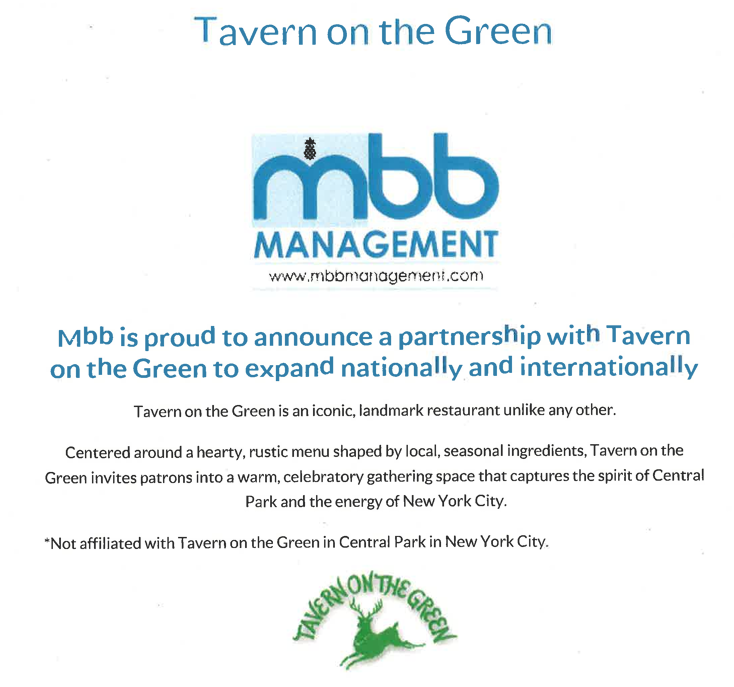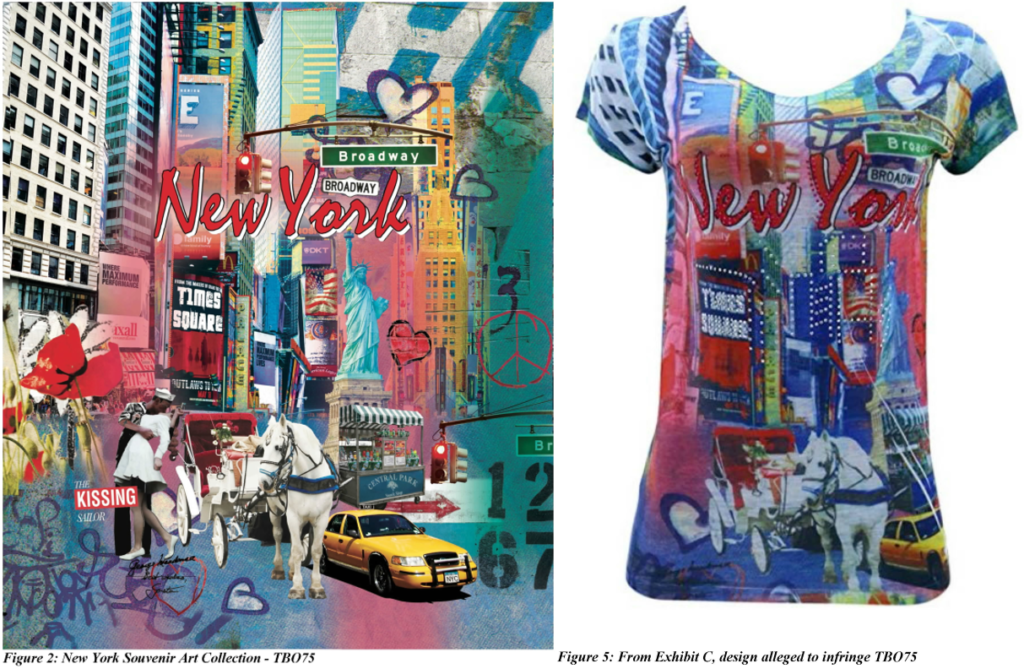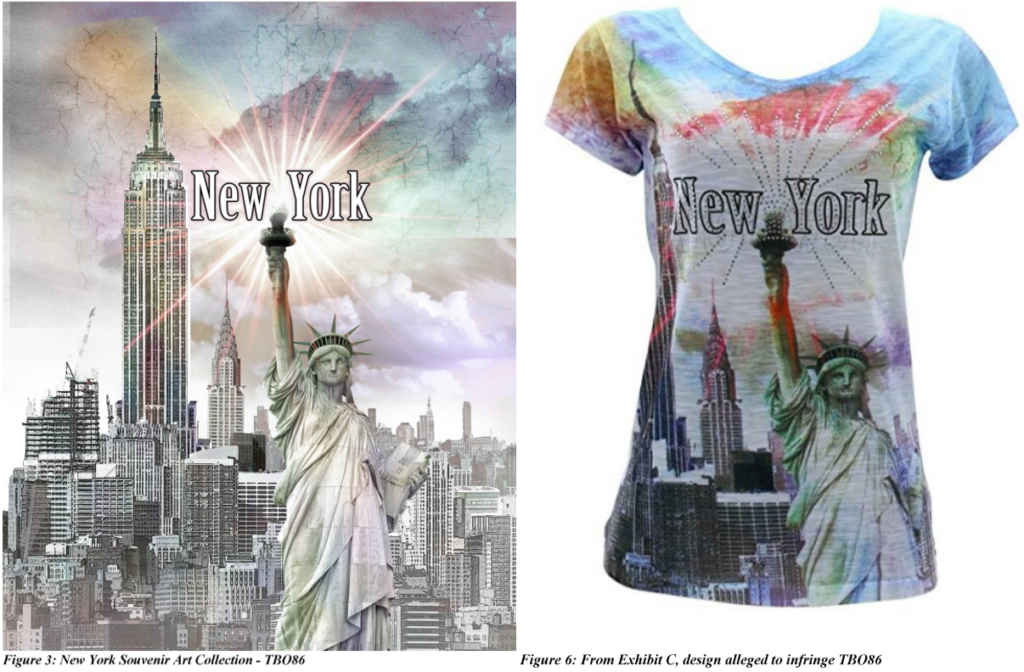The Port Authority of New York and New Jersey owns the site on which the World Trade Center in New York sits. The original two towers complex was completed in 1973 and included the “Top of the World” observation deck and gift shops, which were operated under a lease with the Port Authority. As part of the lease, the lessee could only sell merchandise with the WORLD TRADE CENTER or TWC marks with the Port Authority’s consent.
When the New York World Trade Center was built, there were already other World Trade Centers in the world. They were interested in creating a network, so the Port Authority incorporated the plaintiff World Trade Centers Association in 1969, which received dues from the member organizations.
By November 1985, the Port Authority had obtained six New York state service mark registrations for advising businessmen as to prospective customers and suppliers, operating facilities for commodities trading, erecting international trade facilities, telecommunications services, commuter rail services, and restaurant services, exhibitions and seminars. On February 18, 1986 the Port Authority assigned the marks to WCTA:
PORT AUTHORITY has sold and does hereby sell, transfer and convey to WTCA, its successors, assigns and legal representatives, the entire right, title and interest in and to said service mark WORLD TRADE CENTER, said service mark registrations and the good will of PORT AUTHORITY’s business in the services in respect of which the mark is used, together with all rights to apply for, obtain and hold registrations of the same and renewals and extensions thereof, and together with all right to bring suit for any past and future infringement of said mark. PORT AUTHORITY reserves to itself the right and license to use said service mark for the existing and future services.
About two weeks later the WTCA and the Port Authority entered into a license agreement for the “Licensed Marks,” which were defined as the six New York registered marks, a federally registered design mark for association services, and two Argentinian registrations. The Port Authority was granted a license to use the marks for “the service of fostering world trade and for such additional trade services as LICENSOR may from time to time approve in writing.”
WTCA then filed an application to federally register WORLD TRADE CENTER for “association services, namely, fostering and promoting world trade and international business relationships.” The application averred that “to the best of [Tozzoli’s] knowledge and belief no other person, firm, corporation or association has the right to use said mark in commerce, either in the identical form or in such near resemblance thereto as may be likely, when applied to the services of such other person, to cause confusion, or cause mistake, or to deceive,” although there were World Trade Centers in New Orleans, San Francisco, Boston, San Diego and Houston that predated WTCA’s incorporation.
The original five buildings and mall were each leased to single-purpose entities controlled by Silverstein Group. Four of the five buildings and the mall signed trademark license agreements with WTCA. When in 2001 WTCA later sub-leased office space from the Port Authority, the parties signed a letter confirming the Port Authority’s rights under the 1986 Assignment to use the WORLD TRADE CENTER and WTC service marks royalty free and to sublicense them as contemplated by the assignment.
After the World Trade Center complex was destroyed on 9/11/2001, new buildings 2 through 4 were to be leased again to the Silverstein single-purpose entities, but the Port Authority acquired the single-purpose entity for One World Trade Center, at the time of suit called WTC Tower 1 LLC. WTCA entered into an “Amended and Restated Trademark License Agreement” with the single-purpose entity. The agreement referenced the 2001 letter agreement between the Port Authority and WTCA and stated that “the Original License is hereby continued in full force and effect as amended, restated and superseded in its entirety as follows.” However although the Port Authority was referenced in the agreement, it was not a signatory of this agreement.
In 2013, WTC Tower 1 LLC contracted with Legends Hospitality LLC to lease and operate the rebuilt observation deck at One World Trade Center. The logo was a combination of the terms “One World Observatory” and “One World Trade Center.” When the observation deck opened, it had souvenirs with ONE WORLD TRADE CENTER on them. WTCA sued the Port Authority for trademark infringement. The accused infringment was in the combining, or authorizing Legends to combine, the term “World Trade Center” with “One World Observatory” in a logo, a mode of use that was prohibited by the 2006 agreement, and by sublicensing the WTC marks for use on merchandise without WTCA’s consent.
We start with sovereign immunity – the Port Authority was immune from any remedy of injunctive relief or specific performance on the state law claims, so they were dismissed. WCTA’s federal claims, for federal trademark infringement and unfair competition, as well as the claim for declaratory judgment that the 1986 and 2006 contracts were enforceable, survived.
On the trademark infringement claim, WTCA claimed that it acquired all WORLD TRADE CENTER trademarks and service marks in the 1986 assignment. Not so, the court said – read the assignment carefully: “PORT AUTHORITY has sold and does hereby sell, transfer and convey to WTCA … the entire right, title and interest in and to said service mark WORLD TRADE CENTER, said service mark registrations and the good will of PORT AUTHORITY’s business in the services in respect of which the mark is used …. PORT AUTHORITY reserves to itself the right and license to use said service mark for the existing and future services.” (Emphasis in original.) Recall that the Port Authority at this point was already selling World Trade Center merchandise in the Top of the World observation deck and gift shop. “The assignment contains no language from which the Court could rationally infer that the parties intended to transfer any other rights, including those in trademarks affixed to goods.”
Indeed the Lanham Act says, and the WTCA argued, that a “service mark” has the same effect as a trademark. But that doesn’t make them the same thing:
Whatever the legal similarities between the two species of marks, the use of the term “service mark,” particularly when used in reference to the provision of specific services, is not broad enough to suggest that the parties intended to refer to trademarks affixed to goods.
The grant back in the 1986 license agreement didn’t change anything; “no further licensing agreement could empower WTCA to restrict the Port Authority’s use on goods of a trademark that WTCA did not own.”
WTCA also claimed that the Port Authority breached the 1986 license agreement because its use of the marks on merchandise was not for the purpose of “fostering world trade and … such additional trade services.” As already mentioned the license did not apply to goods, and, further, using the marks on goods is not inconsistent with “fostering world trade.”
As to the 2006 agreement? The Port Authority wasn’t a party, and the only defendant in the case was the Port Authority, not WTC Tower 1 LLC. WTCA’s arguments that an agreement with a subsidiary binds the parent, and that the corporate veil should be pierced, both failed. The restriction in the agreement barring co-branding therefore was not enforceable against the Port Authority. Even if it had been, we come back to the fact that WTCA does not own the trademarks, only the service marks.
The Port Authority also went on the offensive, claiming that the 1986 assignment wasn’t a full transfer of rights and that it retained some aspect of ownership of the New York service marks. “Surplusage” alert: the Port Authority argued that it retained a “right and license” to use the marks, so “right” and “license” must mean something different. However,
reading the Defendant’s reservation of rights in the context of the whole document, the Court finds that Defendant unambiguously retained the privilege to continue to use the service mark, but did not retain any ownership rights. Through the assignment, Defendant covenanted to “sell, transfer and convey to WTCA” “the entire right, title and interest in and to said service mark WORLD TRADE CENTER, said service mark registrations and … the good will of its business in the services in respect of which the mark is used.” (1986 Agreement at 1-2.) Defendant’s grant to Plaintiff clearly evinces an intent to transfer ownership, to include title, of the service mark and registrations. Defendant reserved only “the right and license to use” the service marks. (1986 Assignment (emphasis added).) The phase “to use” must modify both the terms “license” and “right,” otherwise Defendant would have reserved an undefined “right.” Because the reservation clause references Defendant’s continued right “to use” the service marks and did not include the same broad affirmative language of ownership that appears in the assignment clause, the Court construes the 1986 Assignment as unambiguously granting all ownership rights in WORLD TRADE CENTER as a service mark, and the corresponding New York- and Argentina-registered service marks, to Plaintiff and granting only a privilege to Defendant to continue to use such marks.
However, as senior user of the mark for goods, the Port Authority could continue to use the marks for goods without WTCA’s interference. The court did not, though, award summary judgment to the Port Authority on the ownership of the marks because the Port Authority had not offered evidence or argument on the distinctiveness of the mark.
Finally is a claim for cancellation of the 1987 registration for WORLD TRADE CENTER on the basis of fraud. There wasn’t enough evidence on summary judgment that WTCA knew it didn’t have the exclusive right to use WORLD TRADE CENTER:
Here too, the Court must determine whether Plaintiff exhibited the requisite scienter, specifically whether Plaintiff knew or should have known that its declaration was false or misleading. Defendant has proffered evidence that Plaintiff was aware of the purported rights of these other WTCs prior to the application and that Tozzoli was generally uncomfortable about applying for a federal service mark for that reason. Plaintiff contends that there is a genuine issue of fact as to whether it knew or should have known that the rights of any prior users were superior, because all were WTCA members at the time of the service mark application. WTCA’s unique relationship with its members, in which it licensed its centralized intellectual property to them, is a sufficient basis for a jury to conclude that WTCA did not believe that it was subject to any allegedly superior rights to the marks retained by its members.
World Trade Centers Association, Inc. v. The Port Authority of New York and New Jersey, No. 15 CV 7411-LTS-RWL (S.D.N.Y. Dec. 18, 2018).

This work is licensed under a Creative Commons Attribution-NoDerivatives 4.0 International License.




